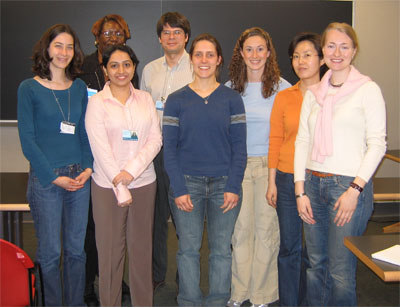

Staff
- Joel Gittelsohn, PhD
- Hee-Jung Song, MS
- Sonali Suratkar, MPH
- Cris Franceschini
- Kevin Frick, PhD
- Sharla Jennings, MS
Overview
The Baltimore Healthy Stores project is being led by a research team from the Johns Hopkins Bloomberg School of Public Health working in partnership with the Baltimore City Health Department and interested community organizations. The formative research, funded by the Johns Hopkins Center for a Liveable Future and the The Center for Adolescent Health Promotion and Disease Prevention, helped the team develop and identify barriers to healthy eating in the community and develop strategies to increase access to a nutritionally adequate diet, improve food security, and reduce the risk of diet-related chronic diseases in Baltimore, Maryland.
A pilot trial in Spring 2004 conducted at the Stop, Shop, and Save supermarket in East Baltimore helped the research team to strengthen and refine project messages aimed at store customers. The feasibility trial and its evaluation, funded in part by the Center for Adolescent Health and by the US Department of Agriculture, Food Assistance and Nutrition Research Program, will lay the groundwork for a city-wide grocery store intervention program in the future. The feasibility trial, which began in January 2006, will run through September of 2006.
Interventionist Manual of Procedures
Download the full Baltimore Healthy Stores Interventionist Manual of Procedures (pdf)
Urban Demographics and Food Availability
Diet and Chronic Disease in Baltimore
References
- Morland K, Wing S, Diex-Roux A, Poole C. Neighborhood characteristics associated with the location of food stores and food service places. Am J of Prev Med 2002;22(1):23-9.
- Stokols D. Establishing and maintaining a healthy environment: towards a ocial ecology of health promotion. Am Psychol 1992;54:443-6.
- Klein A. Baltimoreans are hungry for supermarkets. Baltimore Sun, 05/21/2002.
- Clark JM, Bone LR, Stallings R, Gelber AC, Barker A, Zeger S, et al. Obesity and approaches to weight in urban African-American community. Ethn Dis 2001 Fall; 21(4):676-86.
- Baltimore City Health Department. Mortality Statistical Tables.1999. Baltimore, MD: 2000.










